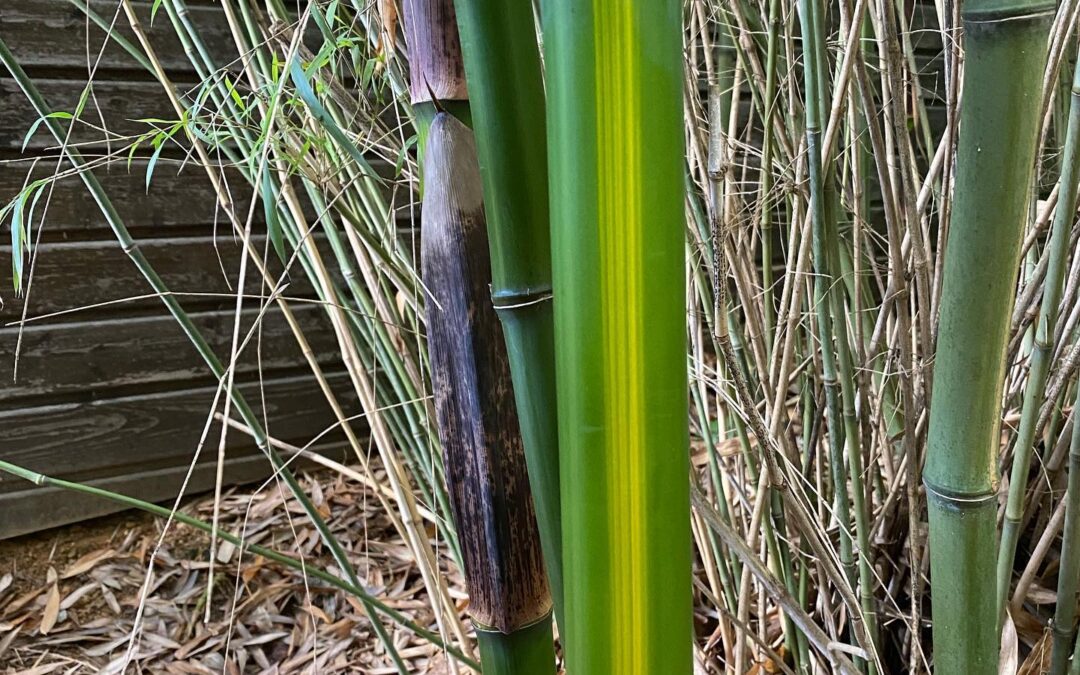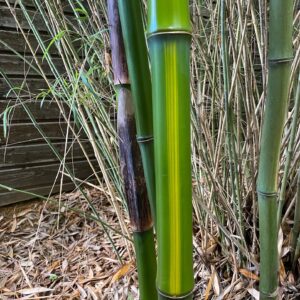
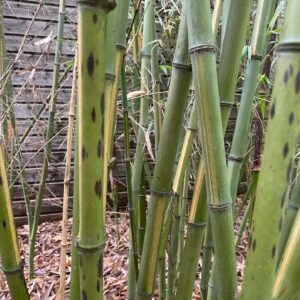
Tout commence après la millième relecture du livre de Paul Whittaker. Je le connais par cœur ce livre, les pages sont usées ; mais ce jour-là, une phrase reste dans mon esprit : « Phyllostachys bambusoides f. mixta n’a, à ma connaissance pas été introduit en Occident. Mais à en juger par son apparence, il mériterait une mission botanique en Chine pour pouvoir être importé. »
Déjà, l’idée d’aller en Chine juste pour les bambous était bien ancrée dans mon esprit, mais en plus il fallait trouver ce fameux Mixta et essayer de le ramener.
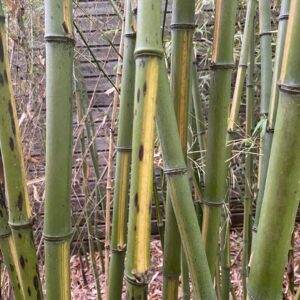
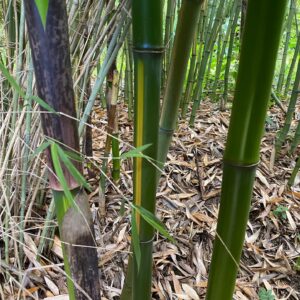
Mais en Chine, rien n’est simple et, même si nous avons pu nous promener dans un bosquet de Phyllostachys bambusoides ‘Mixta’ dès le premier voyage, il aura fallu de nombreuses heures de négociations lors d’un second voyage pour enfin voir arriver en France notre premier pied de ce bambou tant espéré. D’après tous les possesseurs de ce bambou sollicités, il s’agit d’un bambou très difficile à diviser et aucun ne voulait faire une division. Ce 18 avril 2012, il est arrivé dans un petit colis en carton accompagné d’une grosse liasse de documents administratif, mettant un terme à 3 ans de quête.
Tout ça pour un bambou me direz-vous !
L’ajout d’une part de rêve et cette quête ont sans doute altéré ma capacité à pouvoir juger ce bambou, mais il faut admettre qu’il possède des atouts extraordinaires :
Les jeunes chaumes sont verts avec le sulcus jaune vif, avec le temps des tâches noires apparaissent sur le chaume mais pas sur le sulcus, ce qui finit par donner des cannes noires avec un sulcus jaune vif. Etant originaire, comme le Phyllostachys bambusoides ‘Lacrima deae’, des rives de la rivière Dan He, précisément à proximité de la ville de Changzhi, dans la province de Shanxi, tout laisse à penser qu’il saura s’adapter à notre climat.
Les bosquets vus en Chine ne dépassent pas les 6-7 mètres et le diamètre maximum que nous avons pu voir est de 3 cm.
Nous espérons le voir grandir en Auvergne et ainsi pouvoir connaitre , les dimensions maximum qu’il pourra atteindre sous notre climat.
It all starts after the thousandth replay of the book by Paul Whittaker. I know by heart that book, the pages are worn, but that day, a sentence remains in my mind: « Phyllostachys f. mixta has, to my knowledge not been introduced in the West. But judging by his appearance, he deserves a Botanical Mission to China to be imported. »
Already, the idea of going to China for bamboo was just ingrained in my mind, but it also had to find this famous Mixta and try to bring him back.
But in China, nothing is simple, and although we were able to walk through a grove of Phyllostachys bambusoides ‘Mixta’ from the first trip, it took many hours of negotiations during a second trip to finally see happen in France our first pot of the bamboo as hoped. According to all the owners of this bamboo solicited, it is a very difficult to split bamboo and none wanted to make a division. This April 18, 2012, he arrived in a small cardboard package with a large bundle of administrative certification, ending a three-year quest.
All this for a bamboo you say!
Adding an element of dream and this quest may have impaired my ability to be able to judge this bamboo, it is recognized that it has extraordinary assets:
The young culms are green with bright yellow sulcus, with time of dark stains on the stubble but not on the sulcus, which ends up giving black canes with a bright yellow sulcus. Being from such as Phyllostachys bambusoides ‘Lacrima DEAE’, the banks of the River Dan He, specifically near the city of Changzhi in Shanxi Province, all indications are that he will adapt to our climate.
Groves seen in China do not exceed 6-7 meters and the maximum diameter that we have seen is 3 cm.
We hope to see him grow in Auvergne and thus be able to know the maximum size that can reach in our climate.


